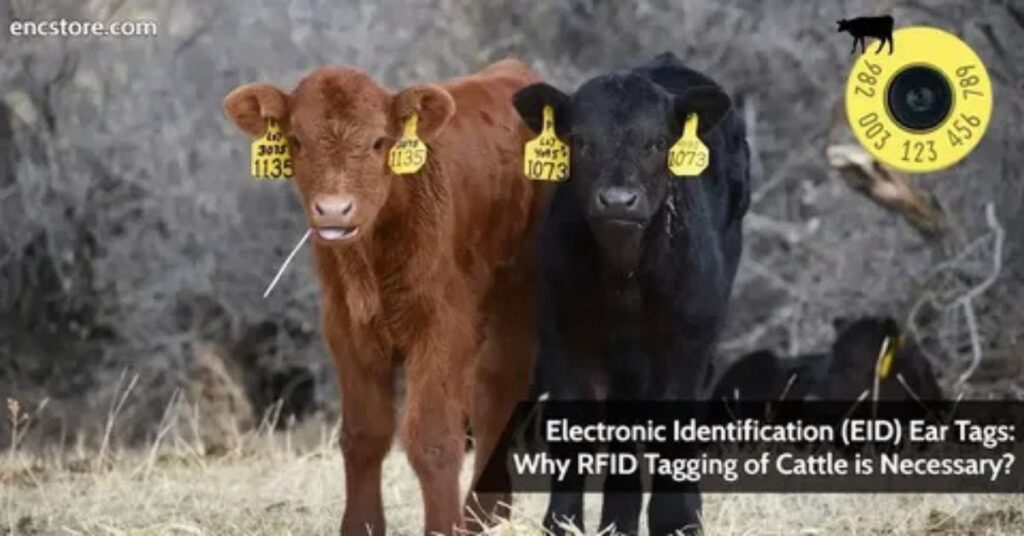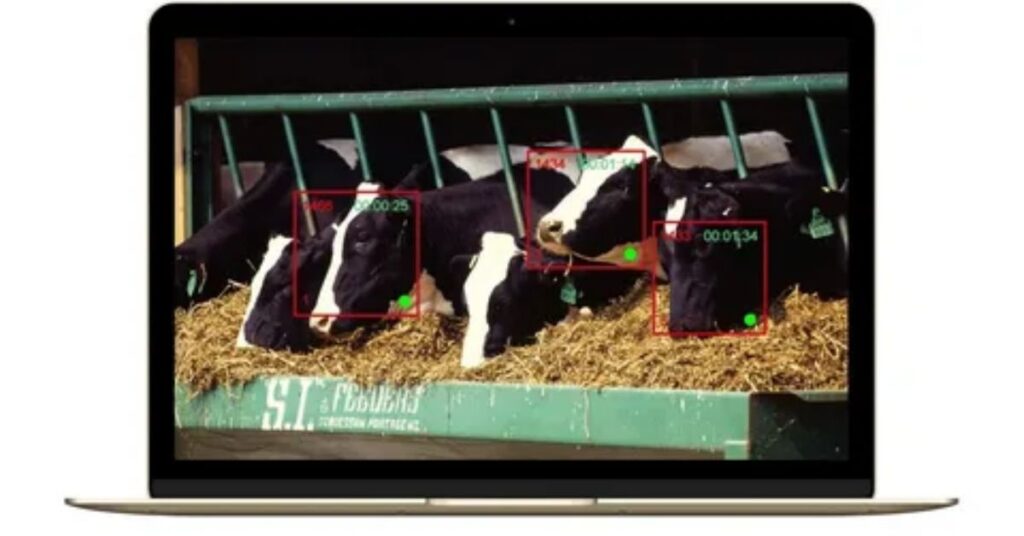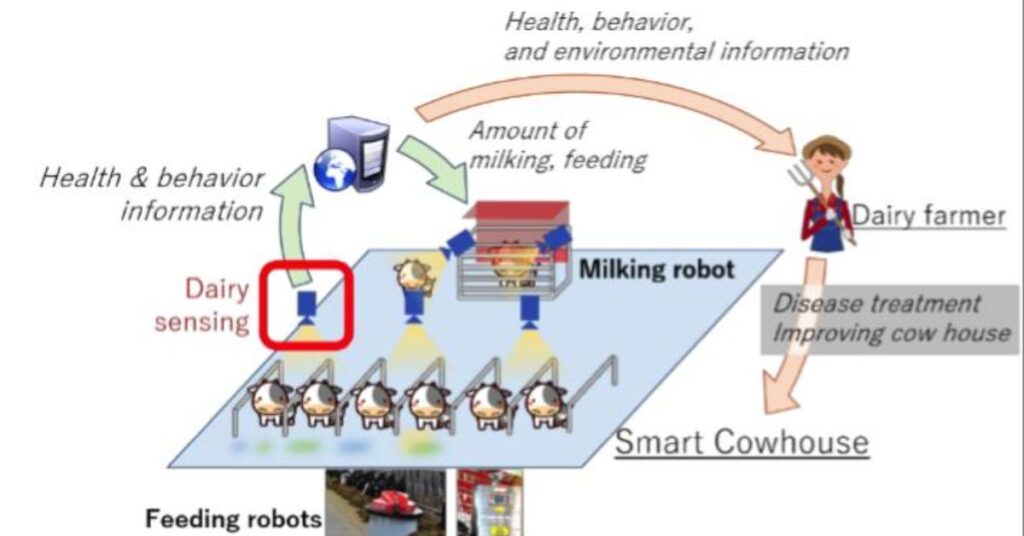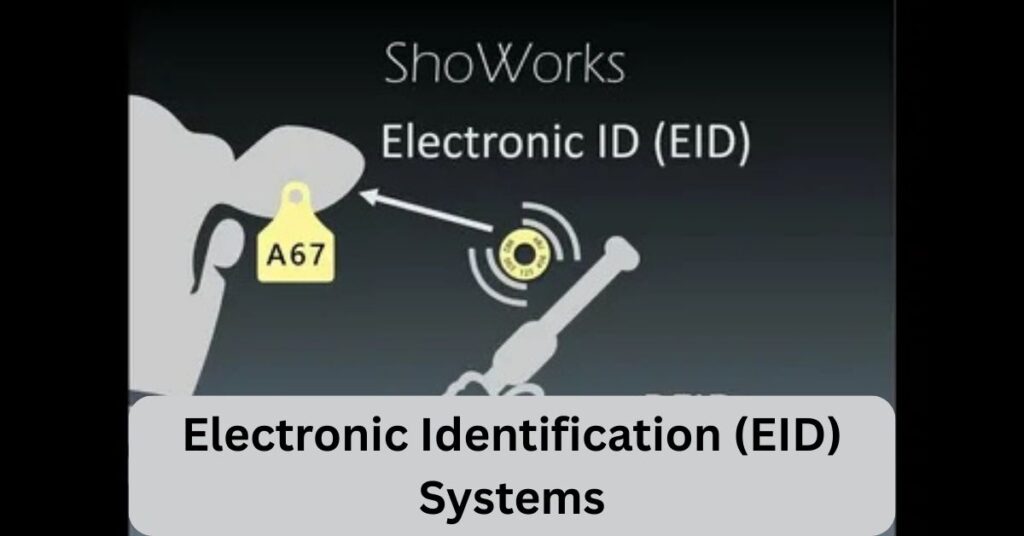By 2025, every cow can have its own digital identity, making dairy farming smarter, safer, and more profitable. This transformation is powered by Electronic Identification (EID) Systems, which allow farmers to track, monitor, and manage their herds with just a scan or a click. Instead of relying on manual records, farmers now use tools like RFID ear tags, implantable microchips, and biometric identification to collect real-time data on milk yield, health, feeding, and breeding cycles.
According to the Food and Agriculture Organization (FAO), better livestock identification systems are crucial for food safety, disease control, and traceability in global dairy supply chains. EID systems not only save time but also prevent costly mistakes, ensuring healthier cows and higher milk production.
In this article, we will explore what EID systems are, how they work, their benefits, challenges, and what the future holds for dairy farming.
- What are Electronic Identification (EID) Systems?
- Why are EID Systems Important in Dairy Farming?
- Types of Electronic Identification (EID) Systems
- How EID Systems Work – Step-by-Step Guide
- Benefits of Electronic Identification (EID) Systems in Dairy Farming
- RFID vs Biometric vs Microchips vs ID Cards
- Global Adoption of EID Systems
- Case Study:
- Technology Behind EID Systems
- Challenges of EID Systems in Dairy Farming
- Future of Electronic Identification (EID) Systems in Dairy Farming (2025 and Beyond)
- Conclusion
- FAQ's
What are Electronic Identification (EID) Systems?
At its core, an Electronic Identification (EID) System is a way to give every cow its own digital identity. Just like people use electronic ID cards or eID numbers for banking, healthcare, or online shopping, cows get small electronic tags that store and share vital information.
These systems use tools like;
RFID ear tags: These tags contain a tiny chip and antenna that store each cow’s unique ID, which farmers can scan wirelessly. They are widely used for tracking milk yield, health, and movement across the herd.
Biometric recognition (like muzzle or iris scans): Advanced systems use AI to identify cows by their nose prints, face, or iris patterns. This eliminates the risk of lost tags and provides highly accurate identification.
Microchips: Small electronic chips are implanted under the cow’s skin to provide permanent identification. They are secure, long-lasting, and harder to tamper with compared to external tags.
Electronic ID cards: Similar to human smart cards, these carry a cow’s digital data and work with automated milking or feeding systems. They make herd management seamless by connecting with farm software in real time.
With a quick scan, farmers can access:
- Milk yield data: Farmers can instantly check how much milk each cow is producing, helping them spot high-yield cows and improve feeding strategies.
- Breeding history: Records of past breeding cycles and genetic data allow farmers to plan better mating decisions for stronger and more productive herds.
- Feeding patterns: By monitoring when and how much a cow eats, farmers can detect nutritional gaps and adjust diets for maximum health and milk output.
- Health conditions – Real-time alerts show if a cow is sick, injured, or stressed, allowing farmers to provide quick treatment before problems spread.
- Vaccination records – Digital records track all vaccinations, ensuring compliance with regulations and preventing disease outbreaks within the herd.
FAO Livestock & Dairy confirms that EID systems improve traceability and ensure animal health compliance worldwide.
Why are EID Systems Important in Dairy Farming?
Dairy farming is a high-pressure business. Farmers must juggle animal welfare, food safety, and profitability. Without precise data, mistakes can be costly. For example:
- Missing a sick cow:
If one cow with illness goes unnoticed, it can quickly infect the entire herd, leading to heavy losses in milk yield and increased veterinary costs. Early detection through EID prevents such outbreaks. - Overfeeding or underfeeding:
Feeding errors not only waste expensive feed but also impact cow health and productivity. With EID data, farmers can balance nutrition precisely, ensuring steady milk production. - Losing track of breeding cycles:
If cows are not bred at the right time, farmers face longer calving gaps and reduced lifetime yield. EID systems help track fertility patterns and optimize breeding schedules.
Electronic Identification (EID) Systems solve these issues by acting like a digital assistant for farmers. Every cow is tracked, every record is stored, and every decision is supported by real-time data.
Types of Electronic Identification (EID) Systems

1. RFID Ear Tags
These are the most common EID tools, where each cow wears a tag with an embedded chip that stores unique identification data. Farmers can quickly scan the tag with handheld or automated readers to access health, feeding, or production records instantly.
2. Electronic ID Cards for Cattle
Just like humans use smart ID cards, cows can carry card-like electronic chips that sync with milking systems and feeding stations. This helps automate record-keeping and ensures every cow gets customized care based on real-time data.
3. Biometric Identification

AI-powered biometric tools identify cows by their unique nose prints, walking style, or face structure, much like human facial recognition. This non-invasive method reduces reliance on tags while improving accuracy in herd management.
4. Implantable Microchips
Microchips are placed under the cow’s skin, giving each animal a permanent and tamper-proof digital identity. Since they cannot be lost like ear tags, these chips provide long-term tracking for health monitoring and regulatory compliance.
How EID Systems Work – Step-by-Step Guide
Let’s simplify the process:
- Tagging the Cow – Farmers attach an RFID tag to the ear or implant a microchip under the skin. This gives each cow a unique digital identity that stays with it for life.
- Scanning the ID – A handheld or automatic scanner reads the electronic number instantly. This ensures farmers can quickly identify cows without confusion or manual record errors.
- Data Collection – Every scan updates the system with details like milk yield, feeding, and health activity. This replaces paper records and provides a real-time health diary for each cow.
- Information Processing – The collected data flows into smart dashboards and cloud software. Farmers can view insights on their smartphones, tablets, or computers anytime.
- Decision Making – Using this data, farmers can adjust feed, schedule vet visits, or improve breeding plans. It helps make faster, data-driven decisions that boost milk production and animal welfare.
This process saves hours of manual record-keeping and prevents costly errors.
Benefits of Electronic Identification (EID) Systems in Dairy Farming
1. Health Monitoring:
EID systems constantly monitor the eating, resting, and walking patterns of cows. Early alerts help farmers detect health problems before they become serious, reducing disease spread and vet costs.
2. Improved Milk Production
By tracking individual milk yield and related conditions, farmers can adjust feed and care for maximum output. This precision ensures healthier cows and consistently higher milk production.
3. Better Breeding Management
Accurate digital records highlight cows with strong genetics and reproductive performance. This allows farmers to build stronger herds with improved fertility and better long-term productivity.
4. Regulatory Compliance
Many countries require livestock traceability to meet food safety standards. EID systems simplify compliance by automatically recording and storing cow identity and movement data.
5. Profitability
EID reduces feed waste, prevents costly illnesses, and improves overall efficiency. Healthier, more productive cows directly translate into more milk, better profits, and sustainable dairy farming.
USDA Dairy Program emphasizes that electronic ID improves transparency across the dairy supply chain.
RFID vs Biometric vs Microchips vs ID Cards
| Method | Cost | Accuracy | Ease of Use | Best Use Case |
|---|---|---|---|---|
| RFID Ear Tags | Low | High | Easy | Large herds |
| Biometric Scanning | Medium | High | Moderate | High-tech farms |
| Microchips | Medium | Very High | Moderate | Long-term ID |
| Electronic ID Cards | Low | Moderate | Easy | Small farms |
Global Adoption of EID Systems

- UK: Farmers use Electronic ID UK cards to track livestock for traceability and compliance. This ensures that every cow’s health, breeding, and milk records are digitally stored, reducing paperwork and improving transparency in the dairy sector.
- European Union: Under the European Digital Identity regulations, cattle identification is mandatory to maintain food safety standards. It allows authorities and farmers to trace milk from farm to table, ensuring consumer confidence and compliance with EU trade policies.
- USA: Farms are adopting biometric recognition and RFID tags to improve efficiency and prevent disease outbreaks. These systems help detect health issues early, optimize milk yield, and support large-scale herd management with precision.
- India: With its massive dairy industry, electronic identification for cattle is being promoted to boost small farm productivity. EID helps farmers track vaccination, breeding, and milk output, making small-scale dairying more profitable and organized.
Dairy Global – Smart Farming reports that more than 70% of European dairy farms are already using RFID technology.
Case Study:
In the United Kingdom, GreenPasture Dairy Farm in Somerset successfully adopted an Electronic Identification (EID) system integrated with AI-powered health monitoring to manage its 350 Holstein cows. Each cow was equipped with an RFID ear tag that automatically recorded milk yield, feeding patterns, and health data in real time. Within one year, the farm saw a 14% rise in milk production, a 30% reduction in veterinary costs, and achieved full traceability compliance under UK livestock laws. This real-world example highlights how combining EID with AI can make dairy farming more efficient, sustainable, and profitable.
Technology Behind EID Systems
EID systems combine several digital tools:
- RFID & NFC chips: These small electronic chips are attached to cows’ ears or collars to store their unique ID and health records. With a simple scan, farmers can instantly access data about milk yield, breeding history, or medical treatments without manual logging.
- AI-powered behavior monitoring: Artificial Intelligence tools track each cow’s daily movements, feeding habits, and activity levels. If a cow becomes less active or shows early signs of illness, the AI system alerts farmers immediately, helping prevent disease outbreaks.
- Cloud software: All collected herd information is uploaded to cloud-based systems for safe and easy access. This ensures that farm data remains secure, backed up, and viewable anytime, even from remote locations.
- Mobile apps: Modern dairy management apps sync directly with EID systems, allowing farmers to monitor herd health, milk production, and breeding data in real time. With a smartphone, they can make quick, informed decisions from anywhere on the farm.
These systems are similar to electronic identification verification in banking, where each transaction is tied to a verified ID. Here, each milk output or health record is tied to a verified cow.
Challenges of EID Systems in Dairy Farming
- Initial Cost: Setting up an EID system requires investment in RFID tags, scanners, and data management software. However, this cost is quickly recovered through better productivity, reduced errors, and improved herd management efficiency.
- Farmer Training: Many farmers are new to digital tools, so proper training is crucial for using EID software, scanning equipment, and data interpretation. Training ensures accurate use and helps farmers make smarter, data-driven decisions.
- Data Security: EID systems store sensitive data like animal health records and production levels, which must be protected from cyber threats. Using encrypted systems and secure cloud storage can safeguard valuable farm information.
- Infrastructure Needs: Reliable internet and power are required for cloud-based EID systems to function smoothly. In many rural regions, limited infrastructure can slow adoption, highlighting the need for improved digital access in farming communities.
Future of Electronic Identification (EID) Systems in Dairy Farming (2025 and Beyond)
The future looks exciting:
- AI Integration: EID systems will work hand-in-hand with Artificial Intelligence to analyze cow behavior patterns and predict diseases before visible symptoms appear. This early detection helps farmers take timely action, reducing treatment costs and improving animal welfare.
- Blockchain Traceability: Through Blockchain technology, every liter of milk will have a digital record from the cow to the consumer. This transparent tracking system strengthens food safety, prevents fraud, and builds consumer trust in dairy products.
- Biometric ID: Advanced facial recognition and gait analysis tools will soon allow cows to be identified automatically without tags. These AI-driven techniques ensure accurate identification and reduce stress caused by physical tagging methods.
- Global Standardization: As dairy trade expands, more countries will adopt universal electronic identification standards for livestock. This global framework will make international milk trade safer, faster, and fully traceable from farm to market.
Conclusion
The dairy industry of 2025 is smarter, faster, and more profitable because of Electronic Identification (EID) Systems. What once required endless paperwork and guesswork can now be done in seconds with a simple scan. These systems give farmers the tools to care for cows better, produce more milk, and build trust with consumers.
Just as people rely on their electronic ID cards for online banking or digital signatures, cows now rely on their EID tags for health, care, and productivity. For farmers, adopting these systems is not just about technology; it is about future-proofing dairy farming for generations to come.
FAQ’s
What is the eID electronic ID?
The eID electronic ID is a digital identity that allows people and organizations to prove who they are online. It’s widely used in banking, government services, and dairy farming for secure and verified transactions.
What is an electronic identification system?
An electronic identification system is a digital solution that verifies identity using tools like electronic ID cards, biometric data, or RFID tags in livestock. It ensures security, accuracy, and trust in both online transactions and farm management.
What is an example of an “e id”?
Examples of eID include the Estonian national digital ID, Bank ID in Sweden, and RFID ear tags in cattle farming. These systems provide secure identity verification for humans and animals alike.

